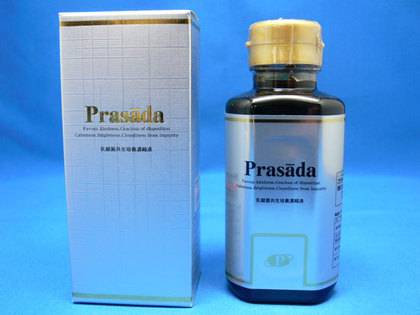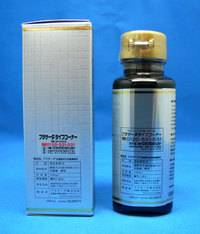Unit Price:203.0USD |
Lactic Acid Bacteria Prasada
The main ingredient of Prasada (Lactic Acid Bacteria Symbiotic Cultivation Concentrated Liquid) is an element (extract) that is secreted during lactic acid bacteria fermentation. From the 25 selected species of lactic acid bacteria, we extracted this element using our unique methods. Then we concentrated it 20 times and fermented it for a year! Prasada lactic acid symbiotic bacteria is resistant to the external impacts and thus can survive gastric acid and be delivered to the targeted location. Let Prasada help you maintain your health and feel refreshed every day. Prasada is 100% natural! And since it doesn't contain any artificial ingredients, it is recommended for all ages, from infants to the elderly. Immune power, the natural resistivity power that humans possess is greatly dependent on the condition of enteric (intestinal) environment. Our intestines are the home not only for the good bacteria, such as Lactobacillus bifidus, but also for pathogenic bacteria, such as Welch bacillus and other. It was proven in multiple studies that good bacteria are involved in digestion and other biogenic needs essential for sustaining health. The environment of a six-month old human baby intestine is 92% made of good bacteria, but at the age of 20 years old this percentage drops to around 10%. 10% is the borderline and if the good bacteria decrease further, the immune power lowers and the human body becomes vulnerable to multiple illnesses. Prasada is recommended for the persons who:
- Are habitual drinkers
- Want to sustain their health and beauty
- Middle-aged persons
| Ingredients: |
defatted soybean, lactic acid bacteria, ferment |
| Suggested Use: | Take a teaspoonful (2cc) of Prasada with a cup of water several times a day. |
| Contents: | 190ml |
| Manufacturer: | Sundolphin Co., Ltd. (Japan) |
Full-text version (where you can make purchases) is here. Please, click here.

